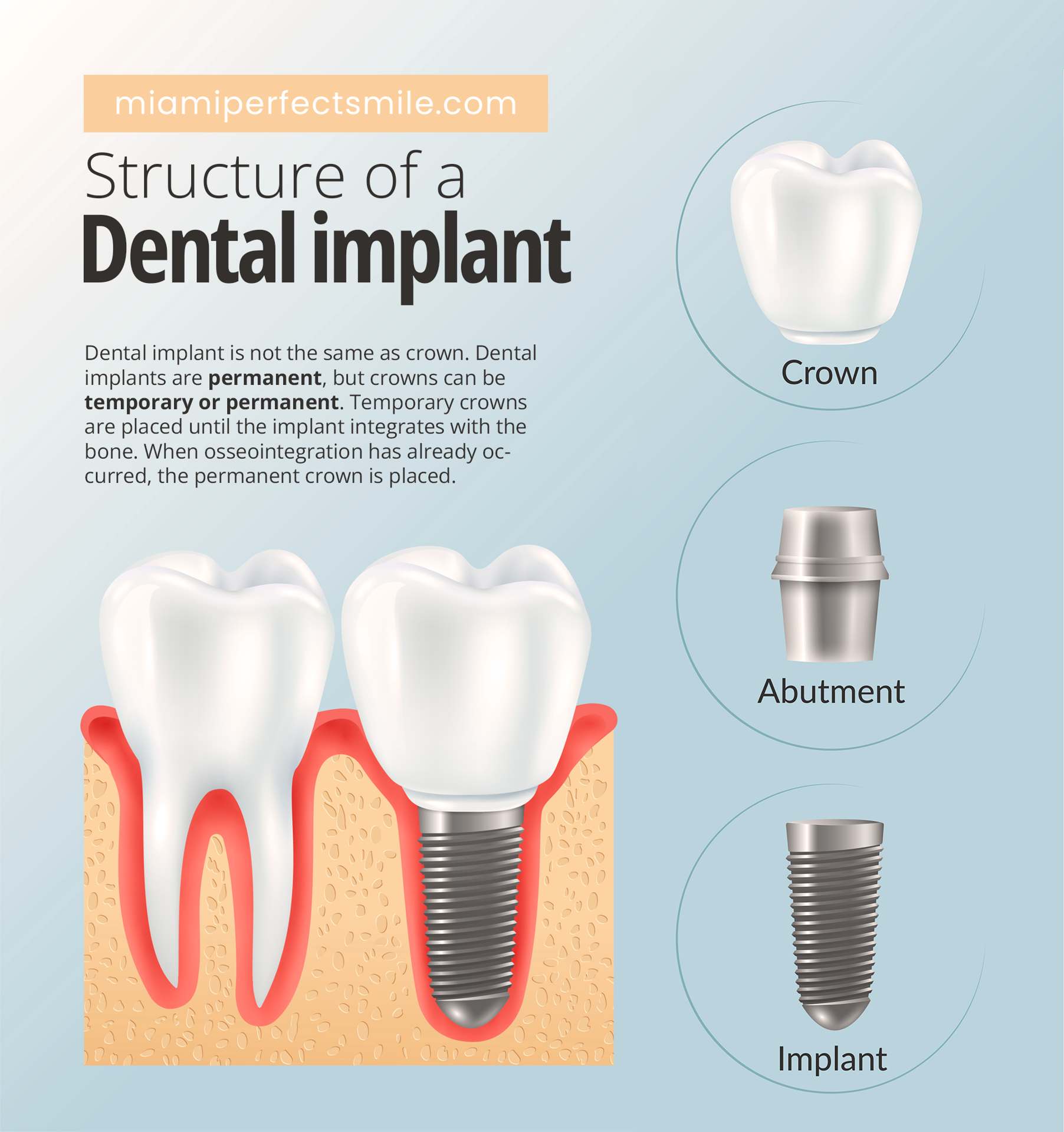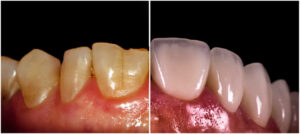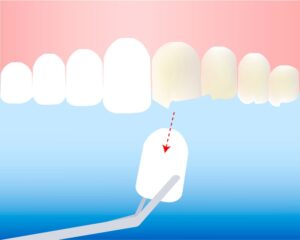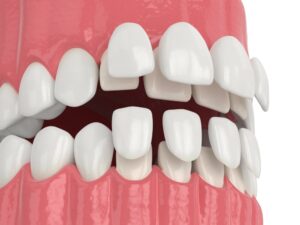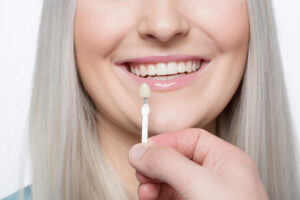In our post today we will take a detailed look at the difference between temporary and permanent dental implants. To clarify this issue, we must begin by explaining the difference between dental implants and crowns or dental prostheses. This topic generates many misunderstandings and confusion among patients, so read the information until the end, because it will help you a lot. Towards the end of the article, we will insert a summary table that will be a great resource for you. We hope that, by the end of the reading, you will have almost become an expert on the subject of the difference between temporary and permanent dental implants.
Miami Perfect Smile: the best prices for dental implants in Miami
If you are inquiring about dental implant treatment in Miami, you have just come to the right place. At Miami Perfect Smile we make everything you need available to ensure you and your smile look renewed, fresh and healthy. In our center, you can get dental veneer treatments, smile design, dental implants, and more. By following the link we just inserted, you can contact us or schedule your first appointment and find out everything you need. We’re here to serve you!
We use the best quality materials and state-of-the-art technology to give you an aesthetic and natural smile. Your well-being is our goal. In our facilities, you will receive the careful and specialized treatment that you deserve. Review the opinions of our patients and check their satisfaction with our treatment. Having satisfied patients is our best letter of introduction.

We accept all types of insurance with which you are covered. And something very important: our prices are reasonable if you compare them with those of other states in the country. You can investigate, and you will see our excellent relationship between quality and price. It is worth noting that many people travel to Florida to undergo dental implant treatment in Miami. Despite the travel expenses, our prices are still more affordable than those in other states.
You May Be Also Interested in: All possible problems with dental implants and their solutions
What is the difference between temporary and permanent dental implants?
As we stated at the beginning of the article, if we want to address the issue well, we must clarify that there is widespread confusion about it. This confusion consists of calling dental prostheses “dental implants”. As the treatment of placing dental implants necessarily requires the placement of a dental crown on the implant, frequently patients, and in general non-specialized people, end up calling the set of implant, abutment, and crown a dental implant, despite this, they are different things. From this initial confusion, further issues are derived: that the prosthesis or temporary crown is called a “temporary implant”.
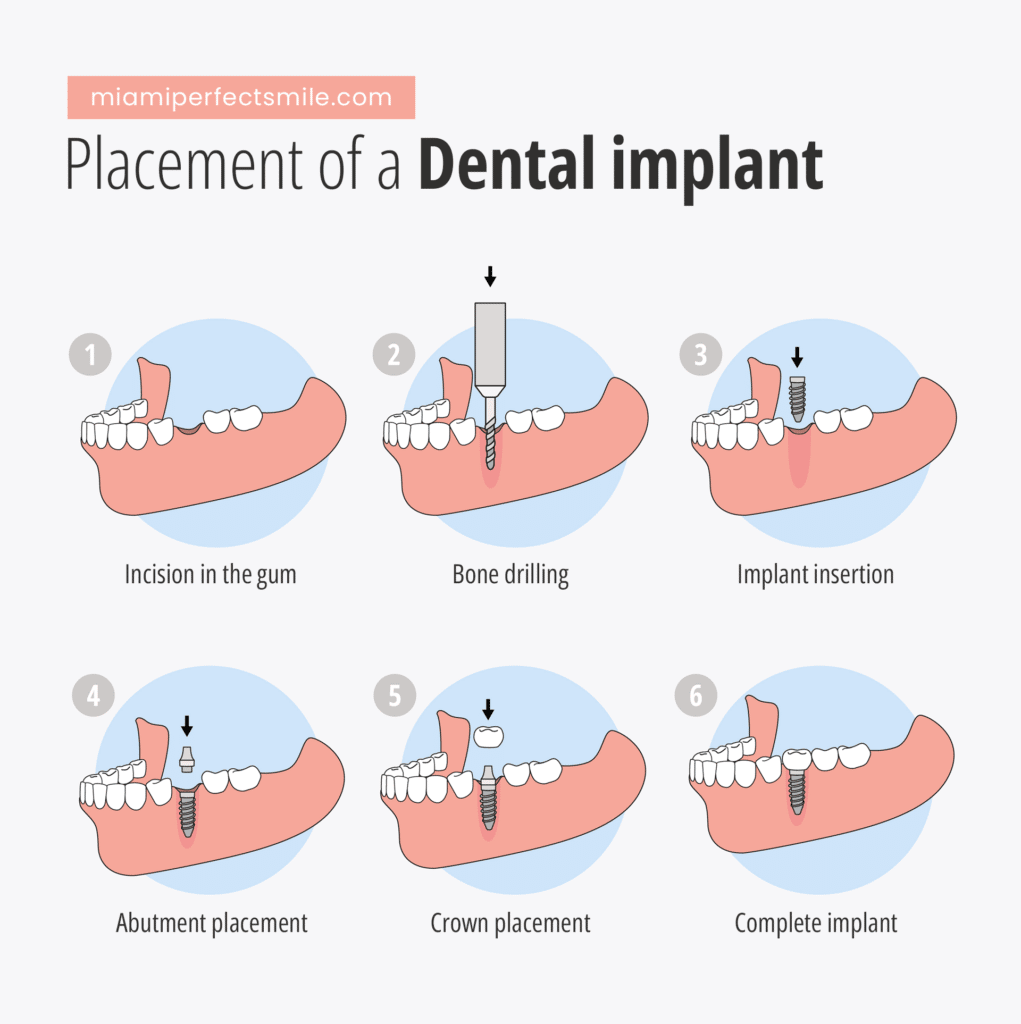
To clear up such confusion, we must begin by saying that dental implants are a different thing from dental prostheses. Implants are artificial dental roots that are placed in order to support artificial teeth, that is, prostheses or crowns. According to the most widespread procedure today, the dental implant is grafted onto the bone and integrated into it, and the dental prosthesis corresponding to the patient’s treatment (crown, bridge, implant denture, etc.) is placed on the implant. .)
It seems to us that the infographic that we will show you after this paragraph, can clarify this whole subject. The infographic illustrates, step by step, the complete procedure for placing a dental implant in the mandible or lower jaw. As can be seen in the illustration, the implant itself is placed first, followed by the abutment being placed in the implant. At this time a cap may be placed over the abutment to keep it covered, although a temporary crown may also be placed. Months later, when the implant has already been integrated into the bone, the temporary crown is replaced by the permanent crown. Here is the infographic:
Types of dental prostheses according to their degree of permanence
Both the infographic and everything we have just explained in the previous section show that the so-called “temporary implants” do not exist: all implants are permanent. What can be temporary or permanent are dental prostheses. Dental prostheses can be made up of one or more teeth, depending on what the patient needs. Prostheses are classified from various points of view, one of which is their degree of permanence.
From the point of view of their permanence in the mouth, dental prostheses are divided into two large groups: permanent prostheses and removable prostheses, although transitional prosthesis must be added to these, which are an intermediate between the two main groups. and that fulfills an important objective: to cover for the lack of teeth while the often long process of manufacturing the permanent denture is completed, or also while waiting for the healing of an incision or the integration of implants in the bone (osseointegration).
The degree of permanence for which dental prostheses are manufactured also determines their price, their design, whether they are thicker or thinner, and the quality of the materials with which they are manufactured. For example, temporary or transitional prostheses are often much less expensive, and their materials are of lower quality and durability. It is considered a waste of money and resources to use quality materials to make a prosthesis that will only be in the mouth for a short period of time, and whose useful life ends when permanent prostheses are fitted.
As we said, from the point of view of their degree of permanence in the mouth, dental prostheses are classified into two large groups, plus an intermediate one. These are: permanent prostheses, transitional or temporary prostheses and removable prostheses. Let’s look at them in more detail:
a) Permanent prosthetics
A permanent dental prosthesis is one that the patient cannot put on or take off. If it becomes necessary to remove the prosthesis, the patient would have to go to the dentist, who will have to perform some type of complex procedure to remove the prosthesis. In these cases, the oral adaptation procedures that have been carried out to place the dental prosthesis may even be irreversible. For example, the wear of enamel or the removal of teeth through extraction are totally irreversible, at least they are today.
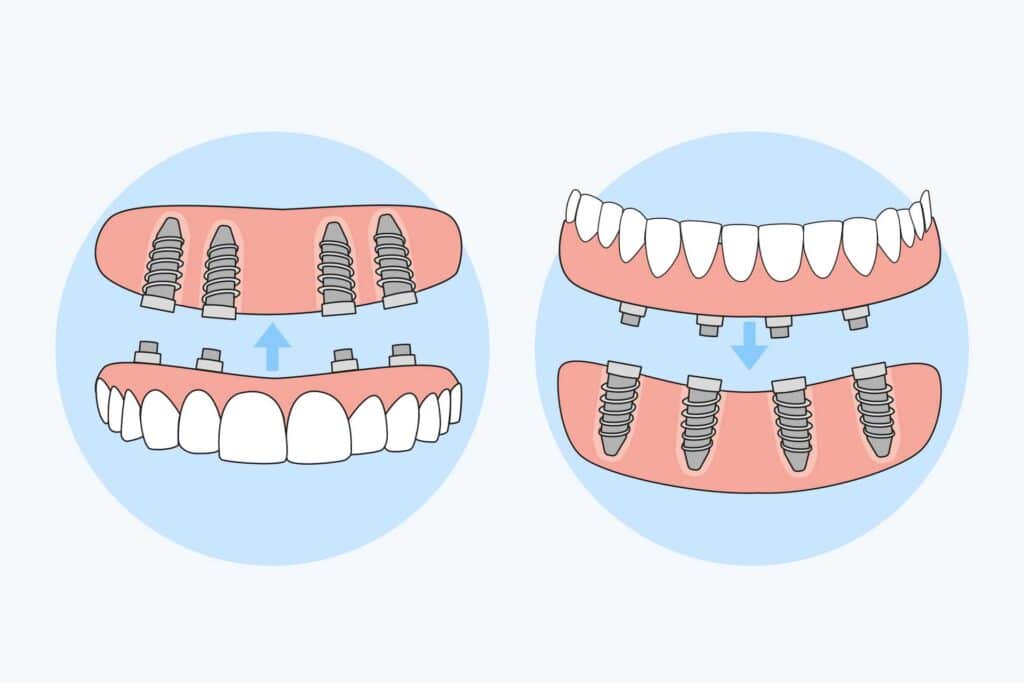
Examples of permanent prosthetics include permanent dental crowns that are placed on the teeth, dental bridges that require carving of the adjacent teeth for their placement, and total or partial prostheses that are placed on dental implants.
b) Transitional or temporary prostheses
A transitional or temporary prosthesis is a dental prosthesis that is placed temporarily on a tooth. It is not intended to remain, so it is thinner, additionally there are differences in the quality of the materials with which it is made or the price. This type of prosthesis is fitted, for example, when a patient has had teeth removed, but his artificial teeth are still being manufactured. If the patient prefers to keep the empty spaces in the mouth inconspicuous, or wants to have teeth to chew while the permanent prosthesis is finished, then the transitional prosthesis is the option.
c) Removable prostheses
Removable prostheses are those that the patient can put on and take off by himself, without the help of the dentist. The main time removable dentures are removed from the mouth is during 8 hours of sleep. This is intended to give the gums a rest, as well as not to overload the prosthesis so that its useful life is further extended. There are at least 3 types of removable prostheses:
- Skeletal prostheses: They are the most robust of the removable prostheses, and have very good support. They are made up of a metal structure that includes metal hooks. These hooks allow fastening, thanks to the fact that they are fixed in the closest proximity to the teeth. This is the most recommended type of prosthesis when the patient has enough neighboring teeth to the missing one, which allows fixation. These healthy attachment teeth need to be in good condition and firm. When chewing with this type of prosthesis, the pressure falls on the metal hooks, and finally on the supporting teeth.
- Acrylic prostheses: As their name indicates, they are made from acrylic material, a type of rigid and resistant plastic. The acrylic, which will have a shade similar to that of the gums, is used to provide support for the prosthesis. This is the variant of removable dental prosthesis that is recommended when the patient does not have many teeth left and a skeletal prosthesis cannot be used. By having the support only in the acrylic adapted to the denture (in addition to a hook attached to a tooth that is healthy), its support is not as firm. They have the great advantage that, once manufactured, new teeth can be added without the need to manufacture them again.
- Flexible dentures: The material from which these flexible removable dentures are made is similar to acrylic, but it is even more flexible and weighs less, and adheres to the mouth better. It is more comfortable than skeleton and acrylic. They are recommended for people who have very few teeth left. The hooks are not metallic but are made of the same material, and are made to be the color of the gum, thanks to which they are quite concealable, although they are still noticeable by those who look at the mouth from the outside.
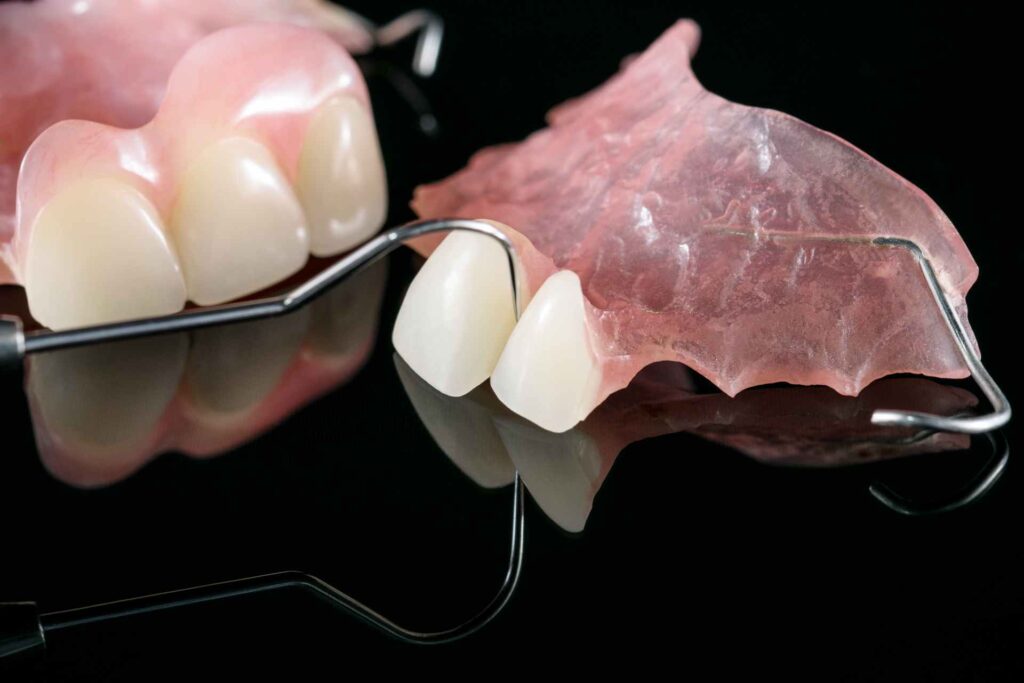
Comparative table between removable and permanent dental prostheses
Here you have, as we promised at the beginning of this article, a summary table on the differences between removable and permanent dental prostheses. We have chosen the main features for this comparison.
| COMPARISON TABLE BETWEEN TEMPORARY AND PERMANENT DENTAL PROSTHESES | ||
| CHARACTERISTIC | REMOVABLE PROSTHESIS | PERMANENT PROSTHESIS |
| Main advantage | The lower cost is often considered one of the most advantageous points of temporary prostheses. For some people, they are the only option, given the high price of permanent prostheses. | Permanent prostheses have as their main advantages the comfort of use and aesthetics since they are usually not noticeable from the outside. Even the person himself can forget that he wears a prosthesis. |
| Main disadvantage | They are usually anchored to the neighboring teeth to the missing one. This creates an overload of healthy teeth, which can eventually create new dental problems. | The price of permanent dentures is often seen as one of their main disadvantages. They are possibly the most expensive dental treatment. |
| Cost | Its price is much lower and cheaper than that of permanent prostheses. In cases of temporary prosthetics, their price can usually be included in permanent prosthetic treatments. The cost of a complete removable prosthesis ranges from $500 to $600. | They are considerably more expensive than removable or temporary dentures. Each implant can cost between $1,000 and $2,000, and each crown can cost between $600 and $800. A complete fixed denture on implants can cost from $7,000 to $10,000. |
| Durability | Normally for between 5 and 10 years, depending on the quality of the manufacturing materials and the care that the person gives them. If they are removed from the mouth during the 8 hours of sleep, their duration can be greatly extended. | Its durability depends a lot on the type of material of the fixed prosthesis. Implants can last from 20 to 40 or more years. Crowns can last around 20 years, but depending on the material they can last much longer. |
| Materials | Removable dentures are often made from various types of metals, as well as acrylic or nylon. If they are transient, the quality of the material is lower. | The most common materials in implants and fixed dental prostheses today are titanium, zirconium, porcelain, and composite resins. |
| Weight | Some variants of temporary prostheses can feel heavy. For example, removable skeletal prostheses are the heaviest, due to their materials and design. | Being permanent, they are sought to have the minimum weight. Implants are usually manufactured from materials whose weight is very low thanks to the fact that they are transition metals. |
| Esthetic | When they are new they are aesthetically pleasing. But especially when they have a lot of use, and if they are not well cared for or misaligned, they can be noticed from the outside. | They present a high aesthetic level. Being permanent and of better material, they tend to imitate the natural appearance of the denture or integrate naturally into the tissues. |
| comfort level | They are experienced as foreign objects in the mouth, although in the long run, the person ends up adapting to the prosthesis. It is not recommended to sleep with the prosthesis on. | Being fixed and permanent, they are not removed at any time, and little by little the person stops feeling them as strange object until he experiences that it is part of his body. |
| Hygiene | They have the advantage that the person himself can remove them from the mouth to clean them, either for a routine cleaning or for a thorough cleaning. | Although they are very clean, proper hygiene must be maintained to avoid infections or plaque buildup. Only the dentist can clean them thoroughly. |
